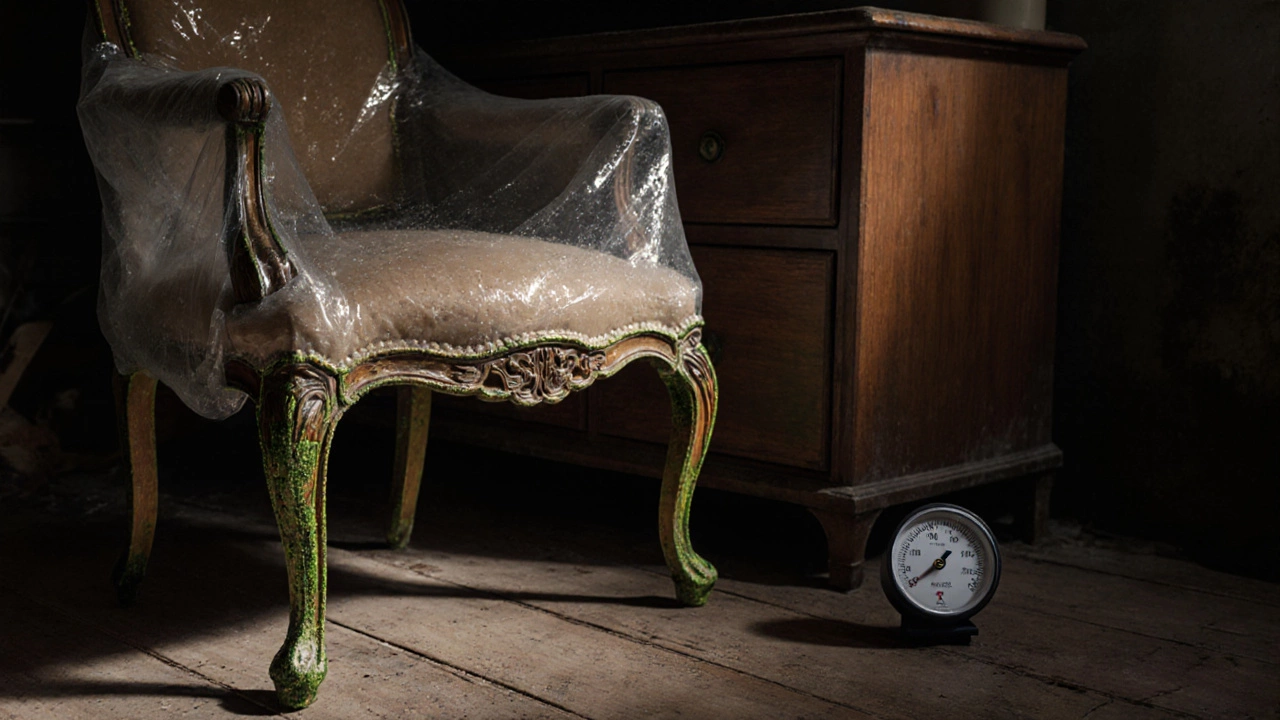When you store furniture, especially wood or fabric pieces, storage mold prevention, the process of stopping mold from growing on belongings during storage. It’s not just about keeping things clean—it’s about controlling the environment. Also known as mold-free storage, it’s what separates furniture that lasts decades from pieces that turn musty and brittle in months. In the UK, where damp air is common year-round, even a well-sealed garage or attic can become a breeding ground for mold if you don’t take simple steps.
What causes mold in storage? It’s not magic—it’s moisture, warmth, and poor airflow. storage humidity, the level of moisture in the air inside a storage space is the biggest enemy. If it stays above 60%, mold starts growing on wood, upholstery, and even cardboard boxes. furniture damp protection, methods used to shield furniture from moisture damage during storage isn’t about expensive dehumidifiers or plastic wraps. It’s about smart choices: elevating items off concrete floors, using breathable covers instead of plastic, and checking for leaks before you even move things in. You don’t need to be a professional to do this right.
Some people think wrapping furniture in bubble wrap or plastic keeps it safe. But that’s a trap. long-term storage, keeping items in a controlled space for months or years requires air to circulate, not trap it. Plastic traps moisture like a greenhouse. Over time, that trapped dampness eats into wood joints, stains fabrics, and creates a smell no air freshener can fix. Instead, use cotton sheets or specialized fabric covers. Place silica gel packs inside drawers. Keep items at least 6 inches off the ground. And if you’re storing in a shed or basement, a simple hygrometer—under £10 online—tells you if things are getting too damp before it’s too late.
It’s not just about the furniture itself. Where you store it matters just as much. A cold, dry attic with good ventilation is better than a warm, sealed garage. If you’re using a self-storage unit, ask about climate control. Most don’t offer it, and those that do charge extra—but it’s worth it for heirloom pieces or custom furniture. Think of prevent furniture damage, actions taken to avoid warping, cracking, or mold on stored items like insurance: you hope you never need it, but you’ll regret skipping it when the damage shows up.
And don’t forget the season. In the UK, autumn and winter bring the worst damp. That’s when mold grows fastest. Start preparing your storage space before the rain hits. Clean everything thoroughly first—dust and dirt feed mold. Let wood dry completely. Remove cushions and store them separately. Check on your items every few weeks if you can. A quick peek can save you from a full-blown disaster.
What you’ll find below are real, tested methods from people who’ve been there—whether it’s protecting a vintage oak dresser, keeping a leather sofa from mildewing in a rented unit, or stopping a wooden dining table from warping in a damp shed. These aren’t theory pieces. They’re the exact steps people in the UK use to keep their furniture safe, year after year. No fluff. No gimmicks. Just what works.

Learn how to protect furniture from mold in storage with simple, proven steps that work in damp climates. Avoid costly damage with humidity control, proper cleaning, and smart storage practices.
More